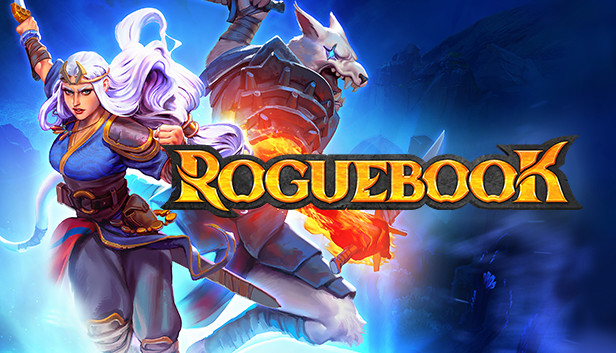 Over the past five years, I have spent a lot gaming time battling against various foes with the most powerful weapon available: cards. Faeria and Slay the Spire have been two of my favorite card-based battle games. These worlds collide with Roguebook. To be precise, Abrakam, a developer, has brought his Faeria universe to the roguelike deck-builder genre, and created a storybook version of Slay the Spire. Although Roguebook isn’t quite as exciting in gameplay as Slay the Spire, it still has plenty to offer. From its brilliant dual hero battle system, gorgeous presentation, and puzzle-like overworlds built around the idea that you are trapped within Faeria’s lore, to its puzzle-like worlds.
Over the past five years, I have spent a lot gaming time battling against various foes with the most powerful weapon available: cards. Faeria and Slay the Spire have been two of my favorite card-based battle games. These worlds collide with Roguebook. To be precise, Abrakam, a developer, has brought his Faeria universe to the roguelike deck-builder genre, and created a storybook version of Slay the Spire. Although Roguebook isn’t quite as exciting in gameplay as Slay the Spire, it still has plenty to offer. From its brilliant dual hero battle system, gorgeous presentation, and puzzle-like overworlds built around the idea that you are trapped within Faeria’s lore, to its puzzle-like worlds.
Roguebook’s overworld exploration is one of its most distinctive points. Each map begins with large areas of blank parchment. It’s only through the use of brushes and inkpots that you can reveal what each tile contains. You’ll find opportunities to draw more cards, transmute cards and build your in-battle energy reserve as you paint. There will be gold in every chapter shop. You’ll also find relics that could power up your gameplan. Additionally, you’ll come across standalone events and mythical creatures. It’s a fascinating layer of overworld strategy that involves learning how to gather and use ink the best way.
Every enemy encounter is a chance to test your cards, abilities and modifiers. Is your strategy working together? Are you making the most of the two heroes that you chose at the beginning of the run, or are you ignoring them? Are you able to deal with multiple foes and work around status effects? Do you have the lethality to defeat enemies who steadily increase their power? It’s important to remember all of this, especially with the increasing number of talents and relics at the top. These perks are fundamentally what will influence your decision on which cards you draft and how to approach any given fight.
For example, the relic Sturdy shell gives equipped heroes five blocks for every damage taken. To negate low damage attacks by an enemy, it is best to end your turn with the hero at the front. This allows you to prioritize attacking and deploying allies in your turn, as well as blocking. You can get extra energy orbs from cards that grant you the relic Flame of Ignus. This means that you should draft aggressively cards that have that ability.
Roguebook’s gem program allows you to modify even the cards in your deck. You might want to lower a card’s cost or add card draw. Or, perhaps you just want to always start a fight with a specific card in your hand. The power of your deck can be greatly affected by cleverly using gems. I enjoyed finding build-defining synergies and really enjoyed exploring them.
Roguebook’s positional gameplay is a great combat puzzle. However, the drawback of the two-hero system is that it makes player strategy feel less focused than other genres. Although I enjoyed the challenge of combining hero abilities in new ways, the unique hero mechanics didn’t always make it stand out enough. Roguebook, despite its limitations, is a fun and entertaining take on deck-building. Its new ideas and beautifully realised world are well worth the effort.